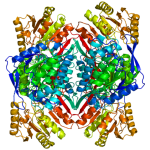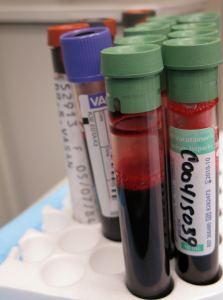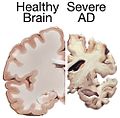
Throbbing headaches are one of the common symptoms for hangovers. Image: Sasha Wolf (Wikimedia Commons)
Are you familiar with pounding headaches, nausea, and drowsiness which occur after a long night of partying? Do you consume Advil, chug on coffee, or return to bed to alleviate your misery? Well, put your fears aside because a potential hangover cure is right around the corner! Recently Hua-Bin Li and colleagues from Sun Yat-Sen University in Guangzhou, China tested how various beverages affect a hangover. From 57 beverages, including herbal teas and carbonated drinks, the carbonated lemon-lime drink Sprite emerged as a potential reliever of hangover symptoms.

- Sprite, a common carbonate beverage and potential hangover cure. Image: Editor182 (Wikimedia Commons)
So how does Sprite relate to hangovers? To answer this question it is first essential to understand how ethanol metabolism works. Contrary to popular belief, many people assume that hangover symptoms occur because of the ethanol which is consumed. However, the symptoms are generated by the chemical by products which are produced when the body metabolizes ethanol. When you consume ethanol, an enzyme Alcohol Dehydrogenase, breaks down ethanol in your liver into a chemical called Acetaldehyde. This is the chemical which is responsible for the horrible hangover symptoms that you experience. Next, another enzyme Aldehyde Dehydrogenase converts Acetaldehyde to a chemical called Acetate and hangover symptoms diminish. Unlike Acetaldehyde Acetate is harmless and may have benefits since it gives the brain an energy boost.
To minimize hangover symptoms, the Chinese researchers focused on how to best limit the production of Acetaldehyde since it was the main culprit for the hangover symptoms. They hypothesized that they could regulate Acetaldehyde by controlling the activity of the two enzymes Alcohol Dehydrogenase and Aldehyde Dehydrogenase. When Sprite was tested, the researchers found that it increased the Aldehyde Dehydrogenase enzyme activity so Acetaldehyde was broken down rapidly and stayed in the body for a shorter time. On the other hand, when drinks such as herbal teas were tested there was an increase in Alcohol Dehydrogenase enzyme activity so the toxic Acetaldehyde accumulated. Conversely, Aldehyde Dehydrogenase was inhibited reducing Acetaldehyde removal and possibly prolonging hangover symptoms.
Currently researchers are unsure which ingredients in Sprite specifically tackle the hangover symptoms and further studies need to be conducted. In the mean time if you are planning to party tonight or get super drunk make sure to carry a can of Sprite and test if it works for you.

– Anupreet Sihra
Sources used:





























